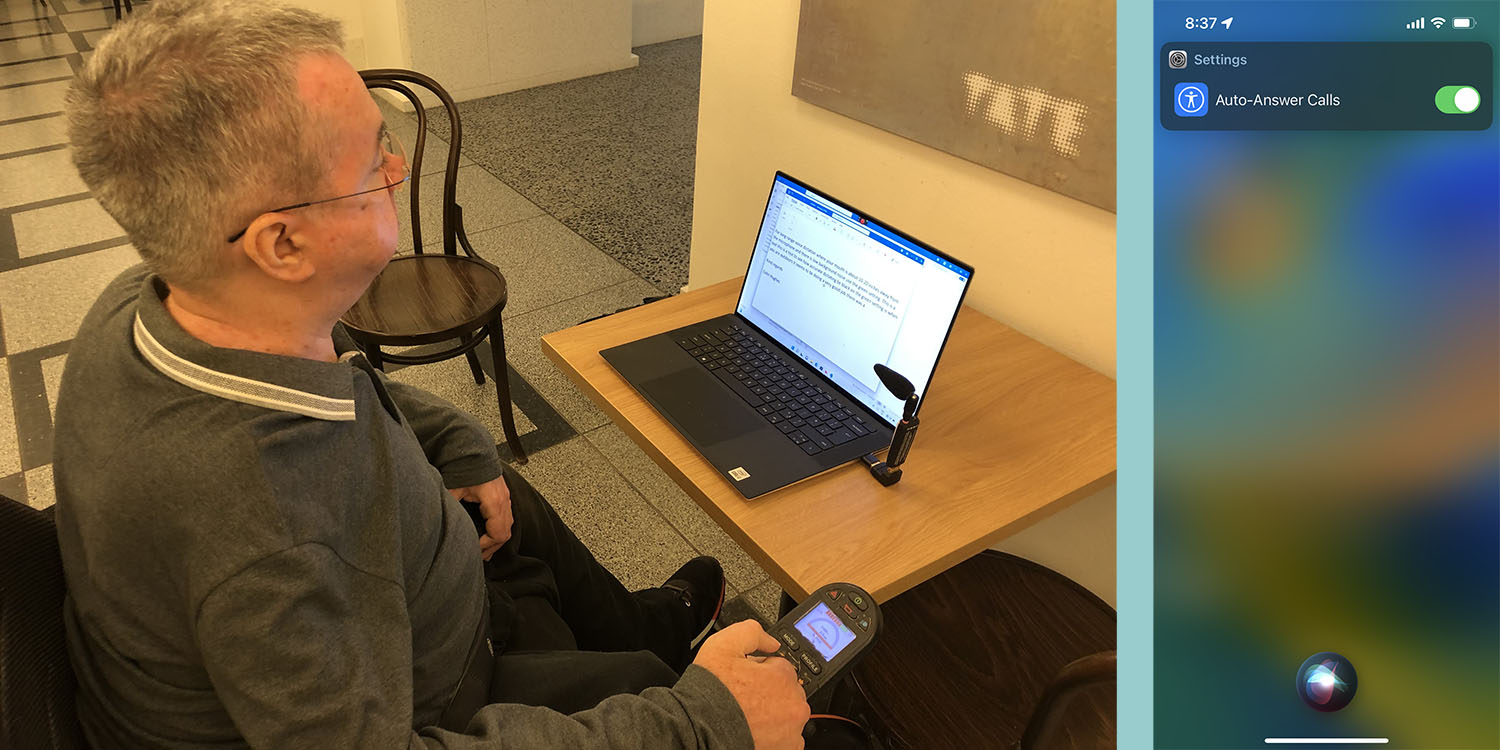
Apple has introduced three iOS 16 accessibility features that might sound like small things, but one 9to5Mac reader says they will make a big difference to his independence.
Colin Hughes has been calling for three improvements, and says he is delighted to learn that Apple listened, and that all three are present in the first beta of iOS 16 …
Background
Apple has long been a leader in accessibility features, and things like instructing Siri to answer a phone call has made a real difference to the lives of many people with disabilities.
However, some key related features were missing, causing frustration by disabled people. One 9to5Mac reader has long been offering his feedback on Apple’s accessibility features, explaining both what works for him, and what doesn’t.
Colin Hughes is quadriplegic, having no use of his legs and very limited use of his arms, and first shared his experiences with us back in 2020. He has since regularly commented on accessibility updates, and noted that Apple has read and acted on these pieces.
- How Apple’s technology helps someone who is quadriplegic – and how it doesn’t
- Quadriplegic Apple user rates iOS 15 and watchOS 8 for accessibility
- Apple quietly adds valuable new feature to Mac Voice Control, but more work needed
- iPhone 13 Face ID failing with CPAP masks; worked with older phones
A number of these issues have now been addressed, and Apple advised him that three more of his accessibility requests have been met in iOS 16.
Siri end call support
You could always ask Siri to answer an incoming call, but bizarrely not to end the call! Apple has now fixed this, in the first beta of iOS 16, as Hughes notes:
I always thought it bonkers when using Siri on iPhones, for years users can place a call by saying “Hey Siri, call…”, but until now there’s been no “Hey Siri, end call” command. It lead to a lot of daily frustration as I can’t press the red button on the iPhone screen to hang up a phone call, so this prompted me to campaign for it. I’m really glad Apple has listened and resolved the contradiction! Hopefully, it will also be of use to anyone who has their hands full.
Auto-answer Calls setup
Some users with disabilities find it easier to simply set their iPhone to auto-answer incoming calls.
However, one of the great ironies is that a feature designed to be useful to, for example, quadriplegic people, required them to do something they couldn’t: Go into settings and flip an on-screen toggle. Hughes says this might sound like a minor thing, but it’s surprisingly important.
I always found it beyond ironic that a feature for people who can’t touch the iPhone screen, or Watch face, required you to do exactly that to turn auto answer on and off. So I have been calling on Apple to provision Siri to turn auto answer on and off with a voice command “Hey Siri turn on auto answer”. I am delighted the company has listened and the ability is coming in both iOS 16 and WatchOS 9.
I don’t want auto answer on all the time and I want to be able to turn it on and off myself without having to ask a carer for help. Personal independence is so important to disabled people, practically and psychologically, and technology can really help with this. This feature may sound niche but it is massive for people like me.
Announce notifications without earphones
The iPhone offers an “announce notifications” feature, where Siri reads aloud things like incoming iMessages. But this only worked with AirPods or Beats headphones. Apple has now fixed this, so it works with MfI hearing aids, as well as on the iPhone’s own speaker.
Hughes says this again is something which might sound incredibly minor, but can be a huge benefit.
Announce Notifications has been a real boon for me since the feature was Introduced last year. I use it a lot to keep in touch and stay connected. Even though I am unable to pick up my iPhone in many situations, with announce notifications on I am able to interact with messages on the go without having to touch my iPhone or Watch.
However, until now, the announce notifications feature only worked when wearing AirPods or Beats buds. I could see how useful announce notifications could be when not wearing AirPods. For example, when my iPhone is sat on a charging stand on my desk, or bedside table. So last year I asked Apple to extend the functionality so you don’t need to wear AirPods, everything can be done through the iPhone speaker.
I am really pleased to learn Announce notifications is being brought to both Made for iPhone hearing aids as well as over the device speaker for users who want to be able to hear their notifications read out even when their AirPods are not in their ear. I understand there won’t be trigger-less followup support, but for the phone speaker you will be able to act on the notification by saying “Hey Siri”.
I’ll be meeting with Hughes shortly to shoot a video showing how a combination of Siri commands and smart home technology has transformed his life.
FTC: We use income earning auto affiliate links. More.






Comments